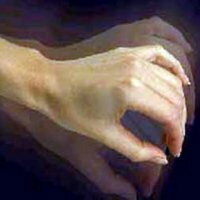Intracranial pressure: symptoms in adults, methods of treatment
In this article we will talk about a disease such as intracranial pressure, tell you what it is, the main causes, symptoms and treatment in adults.
Sometimes people very often ignore headaches. But perhaps it was at this time that they would need to go to the doctor and determine the diagnosis of the origin of the pain. But, even if the pain is unbearable, they still will not go, but will hold out the disease to the extreme. The first, but not the only reason, may be intracranial pressure.
Content
- What it is?
- Identifying some of the symptoms, as well as the main causes of the disease
- Division of intracranial pressure in an adult according to certain classifications
- Diagnosis of the disease
- When do you need immediate medical treatment?
- Medication Treatment Process
- The use of some folk remedies
- Lemon juice and honey.
- Plantain tincture
- Honey and pollen.
- Consequences
- Forecast
- Related Videos
What it is?

Intracranial pressure is a specific condition that is characterized by high blood pressure cerebrospinal fluid under the skull.
During normal operation of the blood vessel and even the brain, with their calm movement, the cerebrospinal fluid can function stably, due to which a kind of balance is created. One has only to increase one of them, it will lead to the infringement of others, since the basic size of the skull will remain the same, which will subsequently cause pressure inside the skull.
Identifying some of the symptoms, as well as the main causes of the disease
When intracranial pressure develops, adults can experience very different symptoms. For example, the most obvious signs of intracranial pressure in adults are:
- the metabolic process is disrupted, which is very often accompanied by poor absorption of cerebrospinal fluid into a blood vessel;
- a large volume of water throughout the human body will lead to an increase in the amount of cerebrospinal fluid;
- at vasospasm can interfere with the stable circulation of cerebrospinal fluid;
- may manifest stroke;
- hypoxia of the brain;
- meningitis;
- hydrocephalus;
- encephalitis;
- excess weight;
- overdose of vitamins A;
- violation of blood flow;
- intoxication of the body;
- the appearance of a tumor in the brain.
But it flows a little differently intracranial pressure in infants, they may also have completely different signs of pain.
There are a variety of treatments that can be used to get rid of headaches permanently. But in this case, it is always necessary to consult a doctor and identify the main cause of the pressure. And only then make some decisions. Otherwise, you run the risk of renewing intracranial pressure, only due to improper treatment.
This pathology can be characterized by different signs of intracranial pressure in adults. The average rate of intracranial pressure should be no more than 7 mm Hg. Art. If the indicator was above seven, then this will signal that there is a violation of the working capacity of the whole organism.
Division of intracranial pressure in an adult according to certain classifications
Usually, an adult has several forms of a similar disease at once:
- chronic;
- sharp.
Read also:Gliosis of the brain: causes, symptoms, treatment and prognosis
Any acute condition very often appears with severe trauma to the skull or intracranial hemorrhage. The second option usually occurs with strokes or ruptured aneurysms. This condition is facilitated by an instant increase in intracranial pressure, which can lead to death.
In this case, a craniotomy is used to relieve a person's pain. This process consists in further cutting off some areas of the skull covering with the help of surgery. As a result, intracranial pressure is noticeably reduced.
The chronic variant of the pathology can be characterized by a disorder of the nervous system. As a result, intracranial hypertension can be observed over a long period of time. This form of the disease can be detected for no particular reason.
Often this can manifest itself as problems with the optic nerve. The chronic image of the disease is manifested by constant severe pain in the head area. Sometimes this pain is very difficult to deal with on your own.
Diagnosis of the disease

To identify this disease, you need to correctly diagnose. And all this can be determined by some symptoms and signs. For example, there is a violation of the outflow in a venous blood vessel or stagnation in the visual nervous system. Because of this, very often elderly people are prescribed magnetic resonance imaging and computed tomography.
There is another way, which consists in introducing a needle with a manometer into certain intervertebral tubules. This process is very dangerous, so only a specialist should perform it.
To diagnose this disease, you will have to carry out a number of complex procedures. And yet, magnetic resonance imaging will play a major role.
Any properly conducted research and treatment of the disease will lead to its final outcome. That is, the disease immediately begins to recede. All this can be seen with repeated tomography. Therefore, you should be especially careful about such pains in the head.
When do you need immediate medical treatment?
Immediate medical assistance will be needed in case of injury and damage to the skull, as well as stuns. Here you can also make the strongest bleeding, which is usually formed with any hematomas, where a provoking surges in intracranial pressure may appear.
- Violent seizure in the form of pain in the head,
- frequent fainting,
- pseudomeningitis.
All this proves about rupture of the vascular aneurysm, provoking an increase in intracranial pressure.
Medication Treatment Process

Intracranial hypertension often leads to the death of the patient. With a constant influx of pressure, it will cause a failure in the stable operation of the whole organism. This becomes the main reason for the occurrence of a nervous disorder, as a result, a decrease in intellectual abilities may occur.
If, during the next examination, some significant deviations were revealed, then the treatment should be carried out only in a hospital. If the main cause of intracranial pressure is a brain tumor, then doctors can make a single decision to remove it. If the patient has hydrocephalus, then in this case, an operation to remove the fluid is also necessary. If during the examination the patient was diagnosed with neuroinfection, then he will have to undergo antibiotic treatment.
Read also:Cephalgic syndrome (cephalalgia): what it is, causes, symptoms and treatment
If, according to a certain diagnosis, the disease is considered insignificant, or rather not at all dangerous for human life, then a separate treatment course is prescribed here, which will help to normalize patient status. At this point, diuretics are usually prescribed, as they will help remove all excess fluid from the entire body. As a result, the withdrawal of cerebrospinal fluid is improved. Why there is an improvement in its absorption.
Treatment with diuretics is carried out in several courses. If the disease very often makes itself felt, then these drugs must be taken on a continuous basis.
Also, the doctor may prescribe nootropic drugs, to improve blood circulation, while the brain is watered with more nutrition. Here are the drugs (pills) that a doctor can prescribe, and which are also dispensed in the pharmacy without a prescription:
- Bilobil;
- Aminalon;
- Undevit;
- Vitrum memory;
- Glycine.
Important! Today, many medicines can be among the effective medicines, but among them there are a lot of fakes, in terms of effectiveness in treatment, so you should definitely consult with doctor.
Unconventional methods of treatment for intracranial pressure:
- certain gymnastics, the main direction of which is to reduce intracranial pressure, the entire course of physical activity is determined individually, and only after a thorough examination;
- unloading process for the venous bed, which is usually carried out using an unusual method, such as: manual therapy and osteopathy;
- specially selected drinking and even food regimen for each patient individually.
Thanks to all these simple procedures, it will be possible to regain excellent well-being within a short time. Usually, the effect of such treatment appears immediately after the first seven days of treatment.
The use of some folk remedies
Some recipes for the treatment of folk remedies are practically unacceptable, but they can only be used when chronic forms of the disease or as an additional aid to prescribed medical drugs.
Lemon juice and honey.
To begin with, you will need to take a whole lemon, then wash it and cut it in half. Thoroughly squeeze all the juice out of it. Add two tablespoons of honey to the finished juice and add one hundred grams of water. Mix thoroughly the entire consistency and can be consumed. The course of treatment in this case will be only 20 days. But it should be borne in mind that after ten days of treatment, you need to take a short break (for a day or two) and then continue.
Read also:Aphasia
Plantain tincture
For this remedy, only three middle plantain leaves are enough. It is best to use dried leaves for this. For all this consistency, you need to add half a liter of boiling water and leave it to infuse for a while. After that you can take every six hours for 50 g. the total amount of admission per day should not exceed three times.
Honey and pollen.
This product must be used for the head massage process. This requires two pieces of pollen. Add one part to honey, mix thoroughly. Leave the other to infuse in a half glass inlets. We mix all the ingredients thoroughly. We leave it to infuse for three days in a cool place protected from children. After that, you can use it to rub the back of the head, the bridge of the nose and the entire part of the cervical vertebra. After the procedure, you must wrap your head with a towel. This entire process must be carried out daily for 90 days.
Consequences

In most cases, this condition is fatal, after which the person simply dies. In addition, intracranial hypertension often causes a large number of complications. That is why you should not postpone or ignore the pain that has arisen, and you do not need to wait for the onset of paralysis or cerebral hemorrhage, you should immediately consult a doctor.
If intracranial pressure was previously identified, which until then only knew how to increase, then immediately contact doctor, he will determine the general condition of the patient and make an appropriate diagnosis, and of course he will conduct a course of treatment, if this is need.
Forecast
Symptomatic severity of the disease in patients with intracranial pressure occurs unexpectedly. And a properly selected course of treatment can improve the general condition of the patient, as a result, a decrease in the symptoms of the disease will follow in a few days, immediately after the start of treatment.
And yet, a positive effect will follow immediately, as soon as doctors can identify and even eliminate the entire root cause of pain, which also influenced the development of the onset of the disease. It could have been a tumor or an excessive amount of cerebrospinal fluid.
Intracranial pressure in the adult generation of people is a very dangerous pathology, as it can cause serious consequences. To avoid all this, you need to carefully approach any treatment and, of course, observe all precautions and follow the recommendations of the attending physician.



